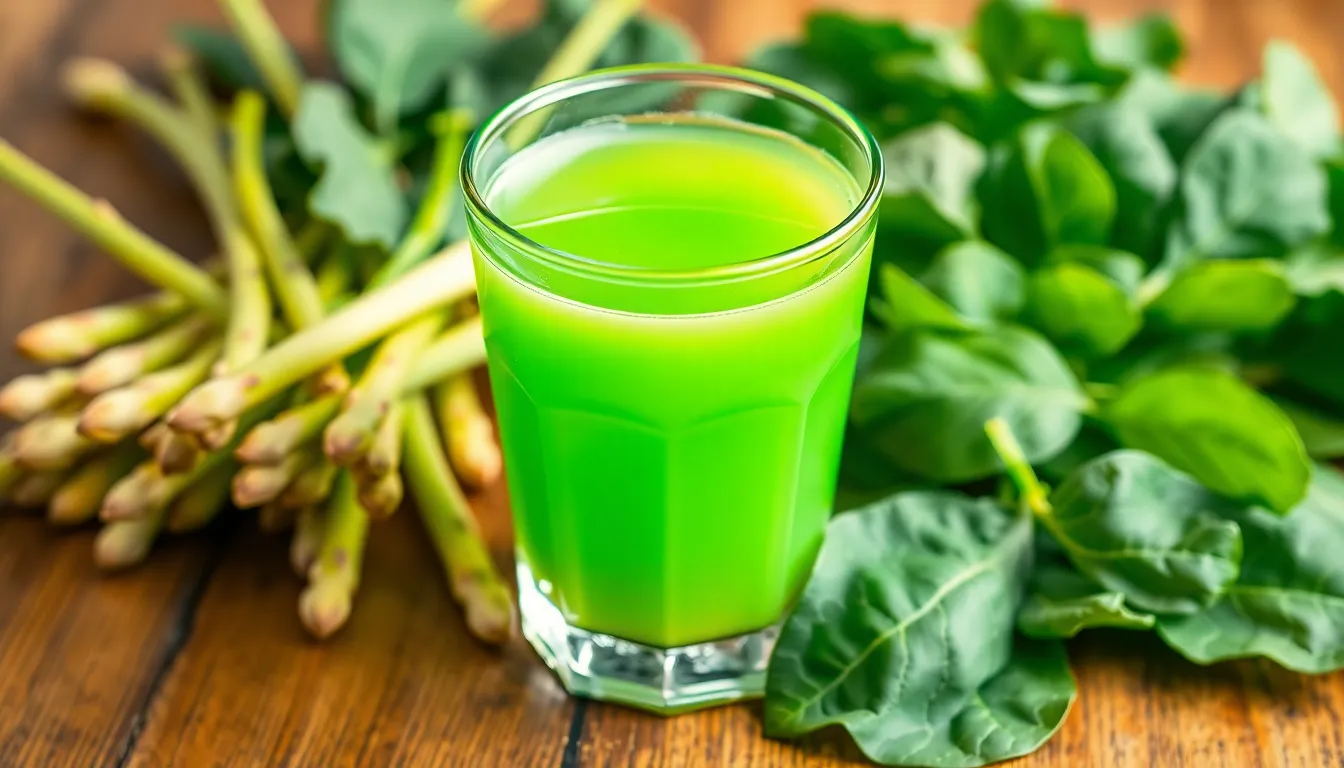Ever glanced down and wondered why your pee looks like a highlighter? A sudden shift to lime green urine can be alarming, but it often has straightforward explanations. From dietary choices to medications, several factors can influence the color of urine, and understanding these can ease concerns.
Certain foods like asparagus and artificial dyes can create vibrant hues, while supplements and medications may also play a role. It’s essential to recognize when this change is temporary and when it might signal an underlying health issue. By exploring the causes behind lime green urine, individuals can gain clarity and peace of mind about their health.
Table of Contents
ToggleUnderstanding Urine Color
Urine color can vary significantly based on several factors. Healthy urine typically ranges from pale yellow to deep amber, depending on hydration levels. When it comes to lime green urine, specific causes could lead to such a change.
Dietary Factors
- Foods: Certain foods can influence urine color. Consumption of asparagus, spinach, or even food with added dyes can cause unusual hues, including green.
- Beverages: Intake of artificially colored beverages often leads to vibrant urine. Popular energy drinks or brightly colored sodas may result in a greenish tint.
Supplements and Medications
- Vitamins: High doses of vitamin B2 (riboflavin) can produce bright yellow or green urine. Dietary supplements that contain B vitamins might also contribute to color changes.
- Medications: Some medications, especially those for urinary tract infections or over-the-counter products containing dyes, lead to altered urine pigmentation.
Health Conditions
- Infections: Rarely, infections in the urinary tract may create abnormal colors. While lime green is uncommon, underlying issues should be evaluated.
- Metabolic Disorders: Specific metabolic conditions, like familial hypermethioninemia, can manifest through unusual urine color, signaling potential health concerns.
Understanding these factors promotes awareness of how diet, medication, and underlying health issues can affect urine color. For persistent changes or accompanying symptoms, consulting a healthcare professional remains crucial.
Common Causes of Lime Green Urine

Lime green urine can arise from several different factors. Understanding these causes helps clarify when dietary choices, medications, or health issues may be contributing to this uncommon urine color.
Dietary Factors
Diet significantly impacts urine color. Foods that are high in certain pigments can result in lime green urine. Common examples include:
- Asparagus: Contains asparagusic acid, which can cause a change in urine odor and color.
- Spinach: Rich in chlorophyll, leading to green-tinged urine when consumed in large quantities.
- Food Coloring: Artificial dyes found in beverages or candies may cause bright colors, including green, to appear in urine.
The consumption of large portions of these foods or those with strong coloring agents often correlates with noticeable changes in urine hue.
Medications and Supplements
Medications and supplements serve as another source of lime green urine. Specific substances can alter urine color, including:
- Vitamin B2 (Riboflavin): High doses may create a bright yellow to greenish tint in urine.
- Certain Antibiotics: Drugs like propofol or indomethacin can lead to discoloration.
- Other Supplements: Some herbal or dietary supplements may also result in unexpected urine colors.
Awareness of these factors aids in recognizing that lime green urine may stem from benign sources, especially when associated with recent dietary changes or new medications.
Health Conditions Linked to Lime Green Urine
Lime green urine can indicate certain health conditions beyond dietary influences. Understanding these conditions is essential for identifying potential health concerns.
Liver and Bile Issues
Lime green urine may signal liver or bile duct issues. Conditions such as hepatitis or cholestasis can alter the normal bile flow, leading to an increase in biliverdin, a green pigment. These liver dysfunctions result in bilirubin buildup, which can change urine color. Symptoms accompanying these conditions may include jaundice, dark urine, and abdominal pain. Medical evaluation is necessary for proper diagnosis and management.
Infections and Other Medical Conditions
Certain infections can lead to lime green urine as well. Urinary tract infections (UTIs) and kidney infections can result in unusual urine colors due to the presence of blood or pus. Additionally, conditions like phenylketonuria (PKU), a rare metabolic disorder, can cause abnormal urine pigmentation. Symptoms such as fever, back pain, or increased urgency might accompany these infections, necessitating prompt medical attention to address the underlying issue.
When to Seek Medical Advice
Individuals should consider seeking medical advice if they notice persistent lime green urine, especially when accompanied by other symptoms. Medical evaluation is essential when symptoms such as abdominal pain, fever, jaundice, or changes in appetite occur. These signs may indicate underlying health issues requiring prompt attention.
Healthcare professionals recommend consultation if there is a sudden onset of lime green urine after starting new medications or supplements. Some medications can significantly impact urine color, and understanding the relationship between these substances and bodily changes is crucial.
Additionally, if changes in urine color persist despite dietary adjustments or hydration efforts, a medical evaluation may be warranted. Ongoing discoloration could signal metabolic disorders or liver and bile duct conditions that require diagnostic testing.
Individuals experiencing symptoms linked to urinary tract or kidney infections, such as frequent urination, burning sensations, or back pain, should seek medical advice. Infections may reveal abnormal urine colors due to the presence of blood or pus. Swift evaluation and treatment can help manage these conditions effectively.
Noticing lime green urine can be concerning but understanding its causes can alleviate worries. Dietary choices medications and health conditions all play a role in urine color. While many factors are benign some may require medical attention.
If someone experiences persistent lime green urine especially with other symptoms it’s crucial to consult a healthcare professional. Being proactive about health and recognizing changes in the body can lead to better outcomes. Awareness and understanding are key to navigating any unusual bodily signs.



